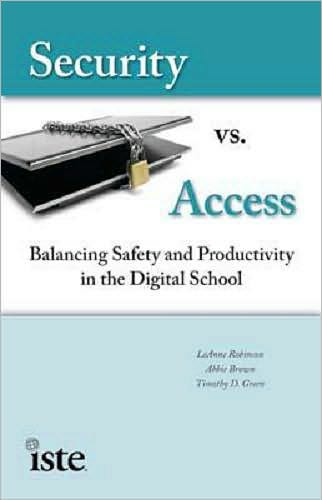“Could concerns over security be generating a fear that is now hin
In chapter 1, the authors focus on inappropriate content. They adequately point out that trying to prevent undesirable Internet content from entering the school is impossible. This is a common misperception that policy-makers have. They think inappropriate Internet content is like adult magazines in a convenience store. All you need to do is place it on the back shelf out of reach. Reality is, such content can’t be completely blocked. Instead, educators would do much better educating our students to make better choices about the content they do access.
The rest of Security vs. Access focuses on all the other security concerns that educators and policymakers have. In Chapter 3, the authors focus on Internet Predators. They once again point out that while the sexual predator danger is real, it has been sensationalized by shows such as MSNBC’s To Catch a Predator. Reality, according to the authors, adolescents engage in risky behaviors that make them targets for online sexual predation. Some of those risk behaviors include:
- sending personal information to people they do not know.
- talking to unknown people online about sex.
- visiting chat rooms targeted toward adolescents.
The authors of Security vs. Access suggest one of the best ways to target this problem is encouraging young people to have open and honest communication with caring adults. They need to know it is okay to talk to adults about these things, and parents and guardians need to proactively monitor teens’ online activities at home.
In the remainder of the book, Robinson, Brown, and Green take on one security issue after another: cyberbullying, network security, inappropriate use of network resources, copyright infringement, and data and identity theft, Using a common format, the authors examine the realities of each problem, describe the common response to the problem, misperceptions about the problem, realities about the problem, and recommendations for a balanced approach toward addressing the problem.
In the end, the authors argue that educators must make reasonable decisions that balance the protection of students and school technological resources with providing flexible access to computers and the Internet. As a part of this balancing act, all educators must become as well informed as possible and learn as much as possible about how the technologies work.
This book is an excellent addition to the 21st century administrator library, and I am sure I will refer to it again and again when having to make decisions that seek the right balance between security and access in bringing education into the 21st century.



No comment for "21st Century Book Review: Safety and Security: Balancing Safety and Productivity in the Digital School"
Post a Comment